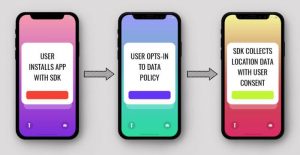How to bring an overwhelming amount of data under control and use the insights gained throughout your business.

Producing actionable insights is one of the most challenging issues that brands face today. Urgency is ever-present, pushing marketers and analysts to rush decisions. But urgency is only half of the problem. Making the situation more chaotic is the fact that we are simultaneously awash in waves of data from too many sources. Between the urgency to produce results combined with the massive sea of data, we are inundated us every time we wade in and then simply washed back to shore.
So where do we start? Transactional, engagement, or demographic data? Prospecting or retention? The inundation keeps pushing us back.
There are strategies to navigate the churn and turbidity, and remedy those issues. Sometimes we simply need to take a step back, narrow our focus, and even get a little ruthless.
Insights begin with goal-setting
First, we need leadership teams to get ruthless with what really matters. Analytics can’t chase the shiny object or rely on some utopian commerce breakthrough — if only we could find attribution in some rabbit-hole metric.
Think bigger. Get brutal with company and divisional goals.
Great goals have a couple of key characteristics in common. First, they’re specific — they have clear expectations and a path forward to measure and show success. Great goals also unify teams instead of dispersing them in different directions where everyone has a separate idea of how they can accomplish them.
To reach goals, every single person needs to be pulling the boat in the same direction. Great goals produce unity, which in turn helps to focus analytical firepower where it matters most. Remove the rest.
Where to start
The lowest hanging fruit is almost always customer retention. It’s the easiest behavior to shift; it has the most room to grow; it’s the most profitable. One way to understand the importance of retention is to ask this question: if a brand acquires a new customer, what does that matter if that brand can’t keep the customer engaged? Prospecting without first nailing down the current customer makes teams spin their wheels and waste energy.
Align your performance indicators
So, we have our goals narrowed down and all teams are working towards a common purpose. The next step is to flawlessly align our performance indicators to those stringently selected goals. Again, narrow your focus and be strict with the fidelity of indicators to goals. They should have either a clear cause-and-effect relationship or a very strong correlation to prove success.
Once we’ve identified those core components, we can simply let the rest of the data wash away. It takes work up front, but that work will be rewarded with a strong path forward and will avoid data paralysis down the road. By deriving indicators naturally from a core set of goals, you organically narrow the data set, so we can focus on producing insights that drive change.
It’s easy to see how many brands can get stuck in the mud during this phase. There are so many temptations, so many paths to take that could work if only for one added piece that we don’t have in the model. But this is a faulty mindset and the effort will be wasted with little to show for all that added work. Put the blinders on and be strict.
Where to start
The answer is almost always transactional data, especially if we’ve felt the impact of overwhelming data paralysis. Stick to transactional indicators early. They’re reliable and strongly aligned to behavior. What shows customer sentiment better: a Facebook Like or purchasing items?
Measure, rinse, repeat
Lastly, all of that work is useless if we don’t have a measurement plan in place to prove success. If we can’t measure, it doesn’t matter.
The best approach is a rigorous test-and-learn strategy. Not only does it prove success, but it also provides actionable insights for the future to help build individual successes into larger groups of changes across channels and teams to drive and achieve goals.
Analytics teams can definitely get backed up, especially with A/B testing. Sometimes the waitlist is daunting. But there are two good options if that happens. First, consider an outside agency dedicated to helping us learn about the customer. An outside source can provide focus when things get too tight for internal teams to produce results.
The other option is to test historically. I can hear the gasps and guffaws of analytics teams, but we need to read the tea leaves however we can to produce results. That means pushing changes to market and measuring year-over-year data instead of one-off direct causations. That option is better suited to areas where we already know best practices or have some data points to suggest the right decisions with high degrees of confidence.
Another reason it’s a viable option — and why analysts should love it — is that it frees up the testing schedule dramatically. So many tests don’t really need to be run in an A/B format; sometimes we have years of historical data or mountains of best-practice to influence our decision. In those instances, measurement is less of a read and more of a confirmation.
Bring order to chaos
These ideas may sound simple and, to a large degree, they are simple. They’re foundational. But without a foundation, how can we achieve our brand aspirations?
So many brands run before they can walk and they fall flat. To bring order to chaos, we need to start with the lowest common denominators to build on our learnings. Start small, grow big. Incrementally and soon, teams from every channel will have the learnings they need to act and provide the best experiences possible for both the brands and the customers.
Opinions expressed in this article are those of the guest author and not necessarily Marketing Land. Staff authors are listed here.
Marketing Land – Internet Marketing News, Strategies & Tips
(96)









